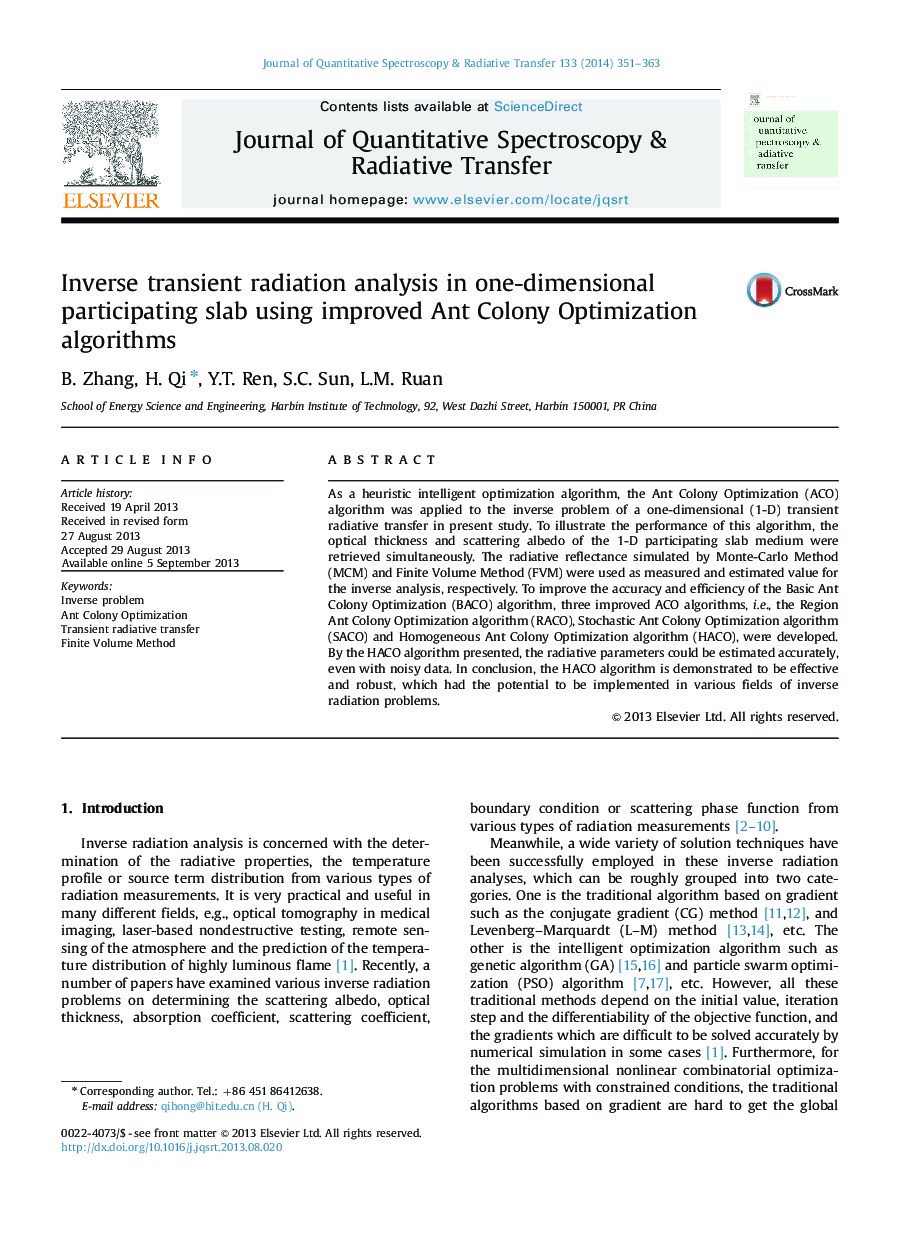| Article ID | Journal | Published Year | Pages | File Type |
|---|---|---|---|---|
| 5428520 | Journal of Quantitative Spectroscopy and Radiative Transfer | 2014 | 13 Pages |
â¢The ACO-based algorithms were firstly applied to the inverse transient radiation problem.â¢Three ACO-based algorithms were developed based on the BACO algorithm for continuous domain problem.â¢HACO shows a robust performance for simultaneous estimation of the radiative properties.
As a heuristic intelligent optimization algorithm, the Ant Colony Optimization (ACO) algorithm was applied to the inverse problem of a one-dimensional (1-D) transient radiative transfer in present study. To illustrate the performance of this algorithm, the optical thickness and scattering albedo of the 1-D participating slab medium were retrieved simultaneously. The radiative reflectance simulated by Monte-Carlo Method (MCM) and Finite Volume Method (FVM) were used as measured and estimated value for the inverse analysis, respectively. To improve the accuracy and efficiency of the Basic Ant Colony Optimization (BACO) algorithm, three improved ACO algorithms, i.e., the Region Ant Colony Optimization algorithm (RACO), Stochastic Ant Colony Optimization algorithm (SACO) and Homogeneous Ant Colony Optimization algorithm (HACO), were developed. By the HACO algorithm presented, the radiative parameters could be estimated accurately, even with noisy data. In conclusion, the HACO algorithm is demonstrated to be effective and robust, which had the potential to be implemented in various fields of inverse radiation problems.
